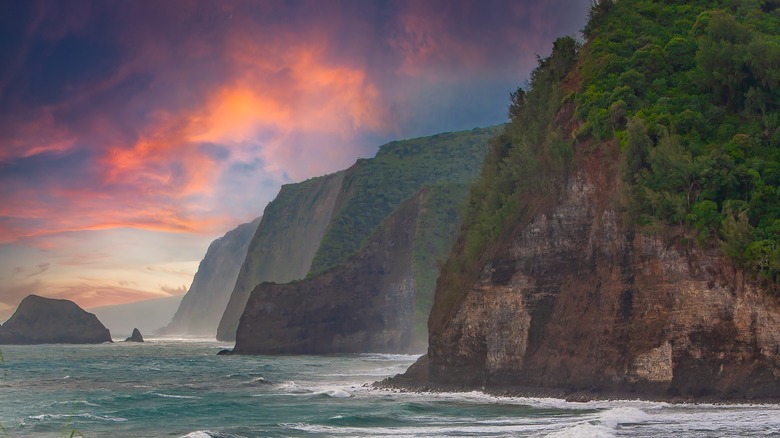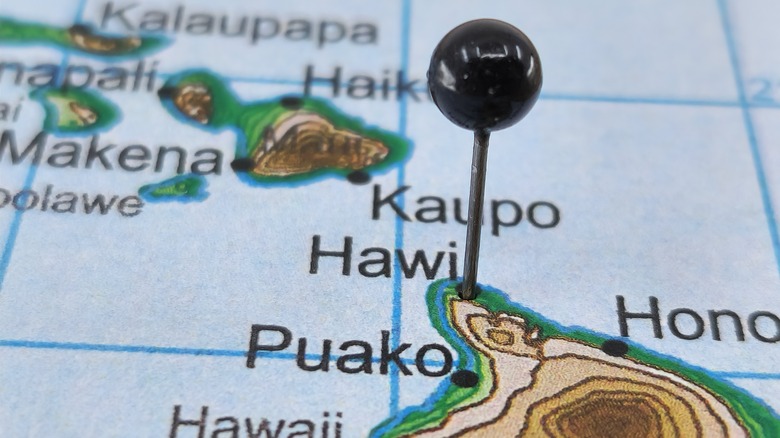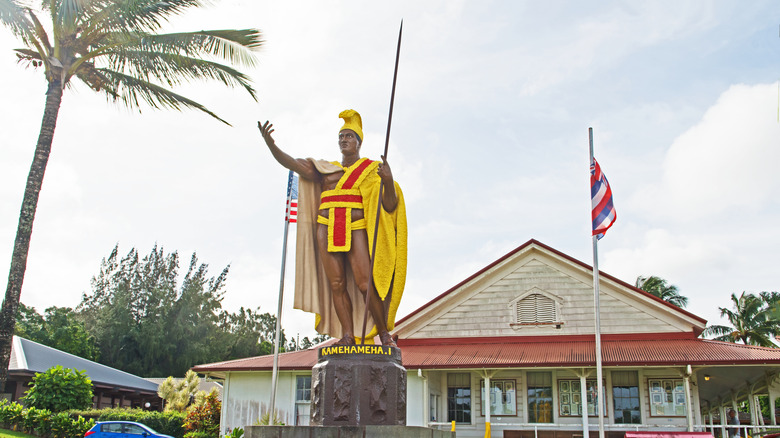Uncover Eclectic Boutiques And Unique Restaurants At This Artsy Hawaiian Town
Hawaii is a vacation destination unlike any other in the United States. Whether you're trying to enjoy one of the only beaches in America voted as the world's best or experience the diverse and funky walkable town that is a hippie haven of beaches and food, this state is truly a marvel.
Part of what makes Hawaii so special is that each one of its 137 islands has its own personality. However, the aloha life feeds into everything, making each spot feel unique yet familiar at the same time. One of the best options for a Hawaiian vacation is the Big Island, known as the Island of Hawaii. Because of its size, there's more to do, and each destination feels like a whole new world.
For this trip, though, we're looking at one specific town on the northern tip of the Island of Hawaii: Hawi. It is one of the oldest and most scenic towns in the state, and it's also the legendary place where Hawaii's most influential ruler, King Kamehameha I, was born. However, while Hawi's history is certainly part of its appeal, it is also notable for its cosmopolitan atmosphere. From boutiques to high-end restaurants, there's a lot to explore in this small town.
Getting to know Hawi on the Island of Hawaii
Once you land on the Island of Hawaii at the Kona International Airport (KOA), you'll have to drive about an hour north to reach Hawi at the northern tip. There are three small towns next to each other in this area: Hawi, Kapaau, and Halaula. Because these towns are relatively isolated from the rest, exploring all three is a good idea before expanding your trip to other locales on the Island of Hawaii.
The history of Hawi is linked to the history of Hawaii itself. As mentioned, it's the birthplace of King Kamehameha I (born in 1758), who united all the islands of Hawaii and turned them into a joined royal kingdom in 1810. One of his first achievements as a king was to commission a massive stone temple called Puʻukoholā Heiau. Because the local people didn't have any heavy machinery or infrastructure at the time, a human chain extended for 14 miles from Hawi to the temple to pass on the rocks used in its construction. You can visit the remains of this important site today.
As with other Hawaiian islands, the Big Island saw an influx of settlers and travelers during the 19th century as sugar plantations became a major industry. Unfortunately, a hurricane virtually destroyed the area in 1871. Although the Hawaiians rebuilt the sugar industry, it would eventually disappear by the middle of the 20th century. With sugar gone, the locals had to figure out how to keep money flowing into Hawi, so they turned to arts and crafts.
What to do when visiting Hawi
No matter where you go in Hawaii, November is the best and most affordable time to travel to the state. However, any time is a fantastic time to travel to Hawi if you're looking for unique souvenirs that capture the spirit of aloha. The main collection of restaurants, boutiques, and eclectic storefronts is at the intersection of Highway 270 and Hawi Road.
Once you find parking, you can stroll on either side of the street and find clothing, jewelry, decor, artwork, and much more from a diverse array of shops. Once you get hungry, there are multiple highly-rated restaurants nearby. For casual diners, Aloha Burger and Barbecue is a laid-back lunch spot. If you want some fresh local Kona coffee, you can head over to the Waimea Coffee Company. For full-service dining, we highly recommend the Bamboo Restaurant and Gallery in the center of town.
Beyond shopping and dining, you can explore more of Hawi by taking a garden tour at the Lokahi Garden Sanctuary (and enjoy an organic, locally grown lunch). If you're more adventurous, you can take a zipline tour with Kohala Zipline and see all that lush Big Island greenery from the treetops. Or, if you're a history buff, you can drive down to the end of Highway 270 and see the original statue of King Kamehameha I, which was built in 1880.


